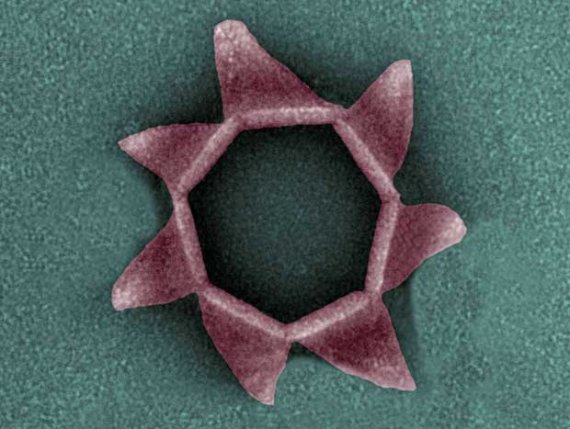In spite of all this, there is life in the springs: single-celled organisms that are adapted to extreme conditions, and viruses that infect these organisms. These are extraordinary organisms and often possess extraordinary talents. Many researchers on Iceland are therefore looking for life as we don’t know it.
In her PhD thesis, microbiologist Tessa Quax describes how the unicellular Sulfolobus islandicus in these hot springs is attacked by a very unusual virus. Viruses are parasites which have to take over host cells in order to reproduce. Once that has been achieved, it remains for the virus offspring to escape from the cell. They usually do this either by enveloping themselves in a protective sheath or by breaking up the cell. The SIRV2 virus, however, has evolved a completely new mechanism: it punctures its host from the inside until it is leaky.
Patent
Quax discovered this mechanism when she studied unicellular organisms under an electron microscope. This revealed that the virus produces a pyramid-shaped construction with seven sides. This nestles into the cell wall and pricks through it. Once the virus has reproduced enough, the pyramid bursts open, creating an opening through which the virus offspring can escape from the cell. Quax: ‘It looks a bit like an opening flower.’
The pyramids have never before been observed in nature. ‘Not a single known virus uses this system,’ says Quax, ‘and the seven-sided symmetry is very rare too.’ The virodrome, as the pyramid has now been dubbed, looked so interesting, in fact, that a patent has been applied for. The idea is that the structure could be used to ensure that tiny bubbles packed with medicines deliver their goods at precisely the right spot in the body.
White patches
To Quax, the most interesting feature of the discovery is that it may tell us something about early life on earth. The earth was a much more extreme habitat at that time: hotter and with more UV radiation. Life in a hot spring may bear a closer resemblance to the organisms of that period than those we normally get to see. Quax is also happy that there are some white patches left on earth where – single-celled – life forms still await discovery. ‘This is just the tip of the iceberg.’

